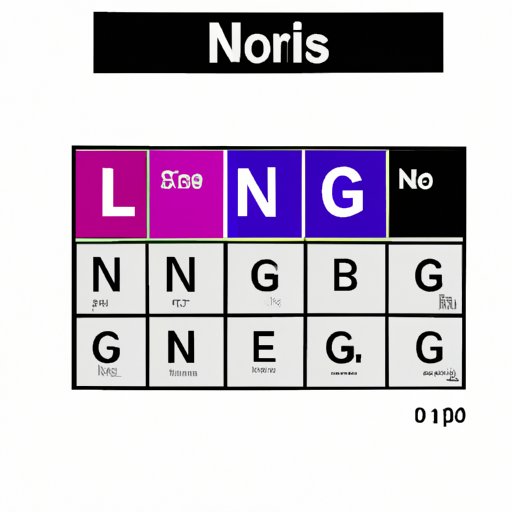I. Introduction
Have you ever heard of the term noble gases? These are the six elements found in Group 18 of the periodic table: neon, helium, argon, krypton, xenon, and radon. What makes these elements so special is that they are nonreactive, or inert. But why? This article will explore the properties, electron configurations, applications, and history of the noble gases to shed some light on the elements that don’t react.
II. Exploring the Noble Gases: An Overview of the Nonreactive Elements in Group 18
The noble gases are defined by their nonreactivity, which means they do not easily combine with other elements to form molecules. They also have low boiling and melting points, as well as low densities. Additionally, they are all odorless, colorless, and tasteless gases at room temperature.
When compared to other elements on the periodic table, noble gases have high ionization energies and electron affinities, which means they require a lot of energy to lose or gain electrons, respectively.
III. The Inert Elements: A Guide to Group 18’s Nonreactive Members
The term “inert” refers to an element that does not take part in chemical reactions. The noble gases are considered inert because they have a complete valence electron shell. This means they do not need to gain or lose electrons to achieve a more stable electron configuration.
Neon, helium, and argon are the most abundant noble gases in the Earth’s atmosphere. Krypton, xenon, and radon are much rarer and are usually obtained through specialized extraction methods.
Why are these six elements nonreactive? It is because their outermost electron shells are completely filled with electrons. This makes the elements uninterested in gaining or losing electrons because they are already stable.
IV. Breaking Down the Nonreactive Group: An Analysis of the Noble Gases
Noble gases have full outer electron shells, which makes them stable and unreactive. In contrast, elements with incomplete outer electron shells are reactive because they want to gain or lose electrons in order to achieve a more stable electron configuration.
Valence electrons play a crucial role in determining reactivity. Noble gases have full valence electron shells and are therefore stable. However, elements in groups 1 (alkali metals) and 17 (halogens) have incomplete valence electron shells and are therefore highly reactive.
The electron configuration of noble gases is unique because it is symmetrical and stable. This sets them apart from other elements that have incomplete and unstable electron configurations.
V. Group 18: Unreactive Elements That Stand Alone. What Makes the Noble Gases So Special?
Noble gases are unique and special compared to other elements because of their nonreactive properties. They have various applications in industry, such as neon lights, argon welding, and helium cooling. They are also used in medicine, such as xenon anesthesia and radon therapy.
Furthermore, noble gases play a critical role in scientific research. For example, helium is used to keep MRI machines cool, while xenon is used in NMR spectroscopy to study molecules in detail.
VI. Noble Gases Unveiled: A Deep Dive into the Nonreactive Group 18 Elements
The discovery of noble gases is somewhat unique compared to other elements. Helium was first discovered in 1868 as a result of solar spectroscopy, while argon was discovered in 1894 during an attempt to isolate a new element from air. The other noble gases were subsequently discovered using different methods.
Noble gases have a rich history in industry and science. Neon lights, for example, were first introduced in 1910 in Paris, while Winston Churchill called radon “the most important and hopeful new radioactive substance” in 1904.
Noble gases also play a crucial role in the universe. Helium is formed during nuclear fusion in stars, while argon is the third-most-abundant gas in the Earth’s atmosphere.
VII. Conclusion
The six noble gases are often overlooked in the periodic table due to their nonreactive properties. However, this does not diminish their importance in various industries and scientific fields. Understanding the properties, electron configurations, and history of noble gases can provide insights into the periodic table and the elements that don’t react. As we continue to explore the wondrous world of chemistry, let us not forget about the noble gases.
Remember to share this article with your family and friends so that they too can learn about the fascinating properties of nonreactive elements.
